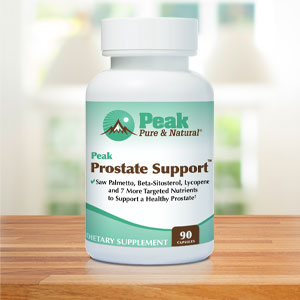Get Easy Health Digest™ in your inbox and don’t miss a thing when you subscribe today. Plus, get the free bonus report, Mother Nature’s Tips, Tricks and Remedies for Cholesterol, Blood Pressure & Blood Sugar as my way of saying welcome to the community!
Significant sign of cellular aging linked to Alzheimer’s

Decades of research into Alzheimer’s disease have primarily focused on the well-known amyloid plaques and tau tangles that are considered the hallmarks of the disease.
In fact, because so much attention has been paid to these brain changes that begin to occur years before signs of cognitive decline, research into how to prevent and even reverse the damage they do has been extensive, delivering insights like:
- Control your blood sugar and you control your Alzheimer’s risk.
- CBD can act like Pac-Man for Alzheimer’s plaques.
- Follow the Mediterranean diet for lower biomarkers of amyloid and tau.
Yet, with all that research, there’s something that’s been missed…
How the DNA in our bodies changes as a result of Alzheimer’s and what if anything, we can do about it…
Telomeres and cell aging
Telomeres act as caps on the ends of chromosomes, protecting DNA from degrading. However, every single time a cell divides, the telomeres get shorter and shorter, leaving that DNA at risk.
That’s why short telomeres are a sign of stress and cellular aging and are associated with a higher risk for neurological disorders.
But since little is known about the links between telomere length and changes in the brain, researchers at Oxford University set out to learn more…
Specifically, the scientists compared telomere length in white blood cells to results from brain MRIs and electronic health records from more than 31,000 participants in the UK Biobank.
Their analysis revealed that longer telomeres equal better brain health. They found that patients with long telomeres had:
- A larger volume of gray matter overall and a larger hippocampus, both of which shrink in patients with Alzheimer’s disease.
- A thicker cerebral cortex — the outer, folded layer of gray matter — which normally thins as Alzheimer’s disease progresses.
Because of this, the researchers believe that longer telomeres act as dementia protection and that shorter telomeres can be linked to brain changes associated with dementia.
In the authors’ own words: “We found associations between telomere length, a marker of biological aging, and multiple aspects of brain structure. This may explain why individuals with longer telomeres have a lower risk of dementia.”
Protecting your telomeres
Is it possible to support your telomeres in a way that might keep them longer?
Previous research in humans says yes…
First, try some brisk walking. Scientists have found that walking at a faster speed is associated with longer telomeres, regardless of the amount of physical activity you get. Longer telomeres may also be why fast walking has been associated with living longer.
Next, maintain healthy levels of vitamin D.
Research has shown a positive association between higher levels of the sunshine vitamin and telomere length — an association they believe is due to vitamin D’s effects on mechanisms such as inflammation and the rate of cellular generation.
Finally, be sure to follow the diet rules that keep telomeres long and cells young, and take advantage of nutrients that support them as well, like these four supplements.
Going forward we should think of brain support against cognitive decline as a two-prong strategy. That means following what research has shown can deter plaques and tau tangles as well as looking out for our valuable telomere caps.
Editor’s note: Did you know that when you take your body from acid to alkaline you can boost your energy, lose weight, soothe digestion, avoid illness and achieve wellness? Click here to discover The Alkaline Secret to Ultimate Vitality and revive your life today!
Sources:
Telomere shortening – a sign of cellular aging – linked to signs of Alzheimer’s in brain scans – EurekAlert!














